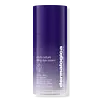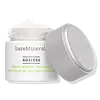What's inside
What's inside
 Key Ingredients
Key Ingredients

 Benefits
Benefits

 Concerns
Concerns

 Ingredients Side-by-side
Ingredients Side-by-side

Water
Skin ConditioningPanthenol
Skin ConditioningSqualane
EmollientGlycerin
HumectantPentylene Glycol
Skin ConditioningHydrogenated Ethylhexyl Olivate
EmollientPropanediol
SolventTriethylhexanoin
MaskingPrunus Amygdalus Dulcis Oil
Skin ConditioningHydrogenated Vegetable Oil
EmollientGlyceryl Stearate Se
EmulsifyingCetearyl Alcohol
EmollientBis-Ethoxydiglycol Cyclohexane 1,4-Dicarboxylate
EmollientPEG-100 Stearate
Glyceryl Stearate
EmollientTocopheryl Acetate
AntioxidantHydroxyacetophenone
AntioxidantDipotassium Glycyrrhizate
HumectantSodium Hyaluronate
HumectantUbiquinone
AntioxidantRosmarinus Officinalis Leaf Extract
AntimicrobialHelianthus Annuus Seed Oil
EmollientCitrus Limon Peel Oil
MaskingCitrus Aurantium Bergamia Fruit Oil
MaskingSalvia Sclarea Oil
MaskingCitrus Aurantium Dulcis Peel Oil
MaskingAvena Sativa Kernel Extract
AbrasiveViola Odorata Leaf Extract
MaskingCamellia Sinensis Seed Oil
HumectantCarthamus Tinctorius Seed Oil
MaskingOryza Sativa Bran Extract
Skin ConditioningTapioca Starch
Chenopodium Quinoa Seed Extract
Skin ConditioningHelianthus Annuus Extract
EmollientCamellia Sinensis Leaf Powder
ExfoliatingSphingomonas Ferment Extract
Skin ConditioningSpilanthes Acmella Flower/Leaf/Stem Extract
AntimicrobialAstragalus Membranaceus Root Extract
EmollientHordeum Vulgare Seed Extract
Skin ConditioningCandida Bombicola/Glucose/Methyl Rapeseedate Ferment
AntimicrobialRosmarinus Officinalis Leaf Oil
MaskingLavandula Spica Flower/Leaf/Stem Extract
Skin ConditioningLitsea Cubeba Fruit Oil
MaskingZingiber Officinale Root Extract
MaskingHydrogenated Olive Oil Unsaponifiables
EmollientMentha Piperita Oil
MaskingTocopherol
AntioxidantCarnosine
Skin ConditioningAllantoin
Skin ConditioningCaprylyl Glycol
EmollientAcetyl Tetrapeptide-9
Skin ConditioningBeta-Glucan
Skin ConditioningCaffeine
Skin ConditioningMannitol
HumectantBisabolol
MaskingTrehalose
HumectantLactobacillus Ferment
Skin Conditioning1,2-Hexanediol
Skin ConditioningSteareth-21
CleansingTetrasodium Glutamate Diacetate
Sodium Hydroxide
BufferingAminomethyl Propanol
BufferingCarbomer
Emulsion StabilisingMicrocrystalline Cellulose
AbsorbentCellulose Gum
Emulsion StabilisingSodium Benzoate
MaskingPotassium Sorbate
PreservativeLimonene
PerfumingLinalool
PerfumingCitral
PerfumingWater, Panthenol, Squalane, Glycerin, Pentylene Glycol, Hydrogenated Ethylhexyl Olivate, Propanediol, Triethylhexanoin, Prunus Amygdalus Dulcis Oil, Hydrogenated Vegetable Oil, Glyceryl Stearate Se, Cetearyl Alcohol, Bis-Ethoxydiglycol Cyclohexane 1,4-Dicarboxylate, PEG-100 Stearate, Glyceryl Stearate, Tocopheryl Acetate, Hydroxyacetophenone, Dipotassium Glycyrrhizate, Sodium Hyaluronate, Ubiquinone, Rosmarinus Officinalis Leaf Extract, Helianthus Annuus Seed Oil, Citrus Limon Peel Oil, Citrus Aurantium Bergamia Fruit Oil, Salvia Sclarea Oil, Citrus Aurantium Dulcis Peel Oil, Avena Sativa Kernel Extract, Viola Odorata Leaf Extract, Camellia Sinensis Seed Oil, Carthamus Tinctorius Seed Oil, Oryza Sativa Bran Extract, Tapioca Starch, Chenopodium Quinoa Seed Extract, Helianthus Annuus Extract, Camellia Sinensis Leaf Powder, Sphingomonas Ferment Extract, Spilanthes Acmella Flower/Leaf/Stem Extract, Astragalus Membranaceus Root Extract, Hordeum Vulgare Seed Extract, Candida Bombicola/Glucose/Methyl Rapeseedate Ferment, Rosmarinus Officinalis Leaf Oil, Lavandula Spica Flower/Leaf/Stem Extract, Litsea Cubeba Fruit Oil, Zingiber Officinale Root Extract, Hydrogenated Olive Oil Unsaponifiables, Mentha Piperita Oil, Tocopherol, Carnosine, Allantoin, Caprylyl Glycol, Acetyl Tetrapeptide-9, Beta-Glucan, Caffeine, Mannitol, Bisabolol, Trehalose, Lactobacillus Ferment, 1,2-Hexanediol, Steareth-21, Tetrasodium Glutamate Diacetate, Sodium Hydroxide, Aminomethyl Propanol, Carbomer, Microcrystalline Cellulose, Cellulose Gum, Sodium Benzoate, Potassium Sorbate, Limonene, Linalool, Citral
Water
Skin ConditioningGlycerin
HumectantButylene Glycol
HumectantSqualane
EmollientDimethicone
EmollientDipropylene Glycol
HumectantC10-18 Triglycerides
EmollientCetearyl Olivate
Gossypium Herbaceum Seed Oil
Skin ConditioningPentaerythrityl Tetraethylhexanoate
EmollientCetyl Alcohol
EmollientSorbitan Olivate
EmulsifyingDiisostearyl Malate
EmollientNylon-12
Myristyl Myristate
EmollientGlyceryl Stearate Se
EmulsifyingTrehalose
HumectantButyrospermum Parkii Butter
Skin ConditioningChondrus Crispus Extract
Skin ConditioningBidens Pilosa Extract
HumectantPalmitoyl Tripeptide-5
Skin ConditioningSh-Hexapeptide-2
Skin ConditioningPalmitoyl Tripeptide-1
Skin ConditioningPalmitoyl Tetrapeptide-7
Skin ConditioningHydrolyzed Hyaluronic Acid
HumectantSodium Hyaluronate
HumectantGluconolactone
Skin ConditioningCetearyl Alcohol
EmollientCetyl Palmitate
EmollientSorbitan Palmitate
EmulsifyingSorbitan Oleate
EmulsifyingTocopherol
AntioxidantPolysilicone-11
Dimethicone Crosspolymer
Emulsion StabilisingHydrogenated Polyisobutene
EmollientBehenyl Alcohol
EmollientStearyl Alcohol
EmollientDimethylacrylamide/Sodium Acryloyldimethyltaurate Crosspolymer
Ethylhexylglycerin
Skin ConditioningPolyacrylate Crosspolymer-6
Emulsion StabilisingT-Butyl Alcohol
PerfumingXanthan Gum
EmulsifyingSodium Citrate
BufferingCitric Acid
BufferingDisodium EDTA
Carbomer
Emulsion StabilisingPolysorbate 20
EmulsifyingSodium Lactate
BufferingSodium Benzoate
MaskingPhenoxyethanol
PreservativeWater, Glycerin, Butylene Glycol, Squalane, Dimethicone, Dipropylene Glycol, C10-18 Triglycerides, Cetearyl Olivate, Gossypium Herbaceum Seed Oil, Pentaerythrityl Tetraethylhexanoate, Cetyl Alcohol, Sorbitan Olivate, Diisostearyl Malate, Nylon-12, Myristyl Myristate, Glyceryl Stearate Se, Trehalose, Butyrospermum Parkii Butter, Chondrus Crispus Extract, Bidens Pilosa Extract, Palmitoyl Tripeptide-5, Sh-Hexapeptide-2, Palmitoyl Tripeptide-1, Palmitoyl Tetrapeptide-7, Hydrolyzed Hyaluronic Acid, Sodium Hyaluronate, Gluconolactone, Cetearyl Alcohol, Cetyl Palmitate, Sorbitan Palmitate, Sorbitan Oleate, Tocopherol, Polysilicone-11, Dimethicone Crosspolymer, Hydrogenated Polyisobutene, Behenyl Alcohol, Stearyl Alcohol, Dimethylacrylamide/Sodium Acryloyldimethyltaurate Crosspolymer, Ethylhexylglycerin, Polyacrylate Crosspolymer-6, T-Butyl Alcohol, Xanthan Gum, Sodium Citrate, Citric Acid, Disodium EDTA, Carbomer, Polysorbate 20, Sodium Lactate, Sodium Benzoate, Phenoxyethanol
Ingredients Explained
These ingredients are found in both products.
Ingredients higher up in an ingredient list are typically present in a larger amount.
Carbomer is a polymer of acrylic acid. Its main role is to create a gel consistency.
A high amount of carbomer can cause pilling or balling up of products. Don't worry, most products contain 1% or less of carbomer.
Cetearyl alcohol is a mixture of two fatty alcohols: cetyl alcohol and stearyl alcohol. It is mainly used as an emulsifier. Emulsifiers help prevent the separation of oils and products. Due to its composition, it can also be used to thicken a product or help create foam.
Cetearyl alcohol is an emollient. Emollients help soothe and hydrate the skin by trapping moisture.
Studies show Cetearyl alcohol is non-toxic and non-irritating. The FDA allows products labeled "alcohol-free" to have fatty alcohols.
This ingredient is usually derived from plant oils such as palm, vegetable, or coconut oils. There is debate on whether this ingredient will cause acne.
Due to the fatty acid base, this ingredient may not be Malassezia folliculitis safe.
Learn more about Cetearyl AlcoholGlycerin is already naturally found in your skin. It helps moisturize and protect your skin.
A study from 2016 found glycerin to be more effective as a humectant than AHAs and hyaluronic acid.
As a humectant, it helps the skin stay hydrated by pulling moisture to your skin. The low molecular weight of glycerin allows it to pull moisture into the deeper layers of your skin.
Hydrated skin improves your skin barrier; Your skin barrier helps protect against irritants and bacteria.
Glycerin has also been found to have antimicrobial and antiviral properties. Due to these properties, glycerin is often used in wound and burn treatments.
In cosmetics, glycerin is usually derived from plants such as soybean or palm. However, it can also be sourced from animals, such as tallow or animal fat.
This ingredient is organic, colorless, odorless, and non-toxic.
Glycerin is the name for this ingredient in American English. British English uses Glycerol/Glycerine.
Learn more about GlycerinGlyceryl Stearate Se is a self-emulsifying (SE) form of glyceryl stearate. Self-emusifying means this ingredient automatically blends with water. It is an emulsifier, emollient, and cleansing agent.
As an emulsifier, Glyceryl Stearate Se prevents ingredients such as oil and water from separating. It is also a surfactant, meaning it helps cleanse the skin. Surfactants help gather oil, dirt, and other pollutants so they may be rinsed away easily.
Emollients help your skin stay smooth and soft. It does so by creating a film on top of the skin that helps trap moisture in.
Learn more about Glyceryl Stearate SeSodium Benzoate is a preservative. It's used in both cosmetic and food products to inhibit the growth of mold and bacteria. It is typically produced synthetically.
Both the US FDA and EU Health Committee have approved the use of sodium benzoate. In the US, levels of 0.1% (of the total product) are allowed.
Sodium benzoate works as a preservative by inhibiting the growth of bacteria inside of cells. It prevents the cell from fermenting a type of sugar using an enzyme called phosphofructokinase.
It is the salt of benzoic acid. Foods containing sodium benzoate include soda, salad dressings, condiments, fruit juices, wines, and snack foods.
Studies for using ascorbic acid and sodium benzoate in cosmetics are lacking, especially in skincare routines with multiple steps.
We always recommend speaking with a professional, such as a dermatologist, if you have any concerns.
Learn more about Sodium BenzoateSodium Hyaluronate is hyaluronic acid's salt form. It is commonly derived from the sodium salt of hyaluronic acid.
Like hyaluronic acid, it is great at holding water and acts as a humectant. This makes it a great skin hydrating ingredient.
Sodium Hyaluronate is naturally occurring in our bodies and is mostly found in eye fluid and joints.
These are some other common types of Hyaluronic Acid:
Learn more about Sodium HyaluronateSqualane is an emollient that helps the skin hold onto moisture. It's an oily liquid that occurs naturally in certain types of fish and plant oils.
Because squalane boosts hydration in the skin, it also comes with plenty of benefits: it is an antioxidant and can help fight free radicals and skin damage. Squalane is also found to have a detoxifying effect when applied.
Squalane comes from squalene, which occurs naturally within the sebum of our skin. It is one of the oils our skin produces to keep itself hydrated. Squalane is the hydrogenated version of squalene and has a longer shelf life.
Research shows that squalane is non-irritating (even at 100% concentration).
In general, it's a fantastic ingredient. It does a great job at hydrating the skin, and it's suitable for those with sensitive skin.
The source of squalane may impact malassezia / fungal acne. This is because olive oil derived squalane can contain impurities such as fatty acids and plant waxes. Sugarcane derived squalane is recommended for anyone with malassezia concerns.
Is squalane vegan?
This depends on the source. Squalane can be derived from both plants and animals. Most squalane used in skincare comes from plants.
Please note: the source of squalane is only known if disclosed by the brand. We recommend reaching out to the brand if you have any questions about their squalane.
Read more about squalene with an "e".
Is squalane an oil?
Squalane is often called an oil, but it’s technically not; it’s a hydrocarbon, meaning it’s only made of carbon and hydrogen, unlike true oils which are triglycerides made of fatty acids and glycerol.
The term “oil-free” isn’t regulated, so companies can define it however they want. Some exclude all oils, while others just avoid mineral oil or comedogenic oils.
While some people avoid oils thinking they cause breakouts, the right kind of oil (or oil-like ingredient like squalane) can actually help balance and hydrate your skin. It’s worth testing out simple oils or squalane to see what works best for your skin.
Learn more about SqualaneTocopherol (also known as Vitamin E) is a common antioxidant used to help protect the skin from free-radicals and strengthen the skin barrier. It's also fat soluble - this means our skin is great at absorbing it.
Vitamin E also helps keep your natural skin lipids healthy. Your lipid skin barrier naturally consists of lipids, ceramides, and fatty acids. Vitamin E offers extra protection for your skin’s lipid barrier, keeping your skin healthy and nourished.
Another benefit is a bit of UV protection. Vitamin E helps reduce the damage caused by UVB rays. (It should not replace your sunscreen). Combining it with Vitamin C can decrease sunburned cells and hyperpigmentation after UV exposure.
You might have noticed Vitamin E + C often paired together. This is because it is great at stabilizing Vitamin C. Using the two together helps increase the effectiveness of both ingredients.
There are often claims that Vitamin E can reduce/prevent scarring, but these claims haven't been confirmed by scientific research.
Learn more about TocopherolTrehalose is a disaccharide made of two glucose molecules (glucose is sugar!). Trehalose is used to help moisturize skin. It also has antioxidant properties.
As a humectant, trehalose helps draw moisture from the air to your skin. This helps keep your skin hydrated.
Due to its antioxidant properties, trehalose may help with signs of aging. Antioxidants help fight free-radical molecules, unstable molecules that may damage your skin.
In medicine, trehalose and hyaluronic acid are used to help treat dry eyes.
Some animals, plants, and bacteria create trehalose as a source of energy to survive freeze or lack of water.
Learn more about TrehaloseWater. It's the most common cosmetic ingredient of all. You'll usually see it at the top of ingredient lists, meaning that it makes up the largest part of the product.
So why is it so popular? Water most often acts as a solvent - this means that it helps dissolve other ingredients into the formulation.
You'll also recognize water as that liquid we all need to stay alive. If you see this, drink a glass of water. Stay hydrated!
Learn more about Water